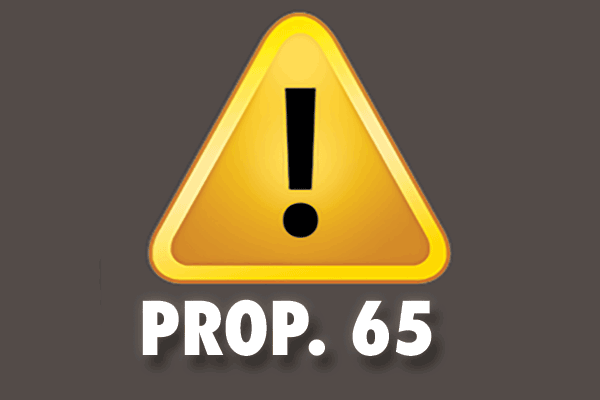 A year ago, on January 8, 2021, the Office of Environmental Health Hazard Assessment (OEHHA) proposed changes to how businesses warn under Proposition 65.
A year ago, on January 8, 2021, the Office of Environmental Health Hazard Assessment (OEHHA) proposed changes to how businesses warn under Proposition 65.
A February 2021 CalChamber article explained why the agency’s proposal to change short-form warnings would have a negative impact on businesses by way of increased costs and unnecessary liability and yet still fail to address the Proposition 65 overwarning problem — something the agency intended to fix with the rulemaking.
The California Chamber of Commerce and the Consumer Brands Association (CBA) led an industry coalition of 119 organizations pushing back against the proposed changes, arguing the rulemaking should be rescinded because the proposal was flawed, relied on faulty data, was contrary to regulatory assurances made by OEHHA to all stakeholders when first overhauling Article 6 warning provisions in 2018 and failed to achieve OEHHA’s stated goal of addressing Proposition 65 overwarning.
In December 2021, nearly a year after the rulemaking began, OEHHA published a notice of its plan to move forward — but with some notable modifications that appear to have been made in direct response to CalChamber and CBA industry coalition comments.
Increase in Short-Form Size
Short-Form Size Limitation Increases from 5 Square Inches to 12 Square Inches
The coalition argued that the agency does not explain nor provide evidence to justify why a 5-square inches or less requirement is the appropriate cutoff. CalChamber and the coalition articulated that such a policy change deviated from OEHHA’s own most recent guidance telling businesses that Article 6 had “no size limitations for which products could utilize short-form warnings.”
The regulated community relied on these express statements when spending significant time and resources overhauling their Proposition 65 compliance programs.
Under the modified approach, OEHHA proposes to increase the maximum label size for short-form warnings from 5 square inches to 12 square inches, explaining that “after considering these comments, OEHHA determined a 12 square inch limit would accommodate [–] concerns, while still limiting use of the short-form warnings to packages with limited available label space for consumer product information that would not easily accommodate the full warning.”
Website/Catalog Uses
OEHHA Preserves Use of Short-Form Warnings on Product Website or Catalog
In the original rulemaking, OEHHA eliminated the option to use the same short-form warnings found on the actual product for online or catalog warnings.
The coalition argued this change created confusion, placed undue burdens and significant financial obligations on California retailers, unnecessarily heightened retailer risk of liability by forcing the use of a different warning from that which could be found on the actual product, was inconsistent with Health and Safety Code Section 25249.11(f), and failed to consider the supply chain complexities.
Under OEHHA’s latest proposed modification to the rulemaking, OEHHA appears to agree with the coalition and preserves the original regulatory language allowing the use of the short-form warnings found on the products to also be used on that product’s websites or in catalogs.
In reversing itself, the agency explains that reverting back to existing law “provides consistency along the supply/distribution chain and conforms to the existing regulations in Section 25600.2.” We appreciate this change.
At the request of the CalChamber, the close of the public comment period for the modified rulemaking was extended one week, to January 21, 2022.

